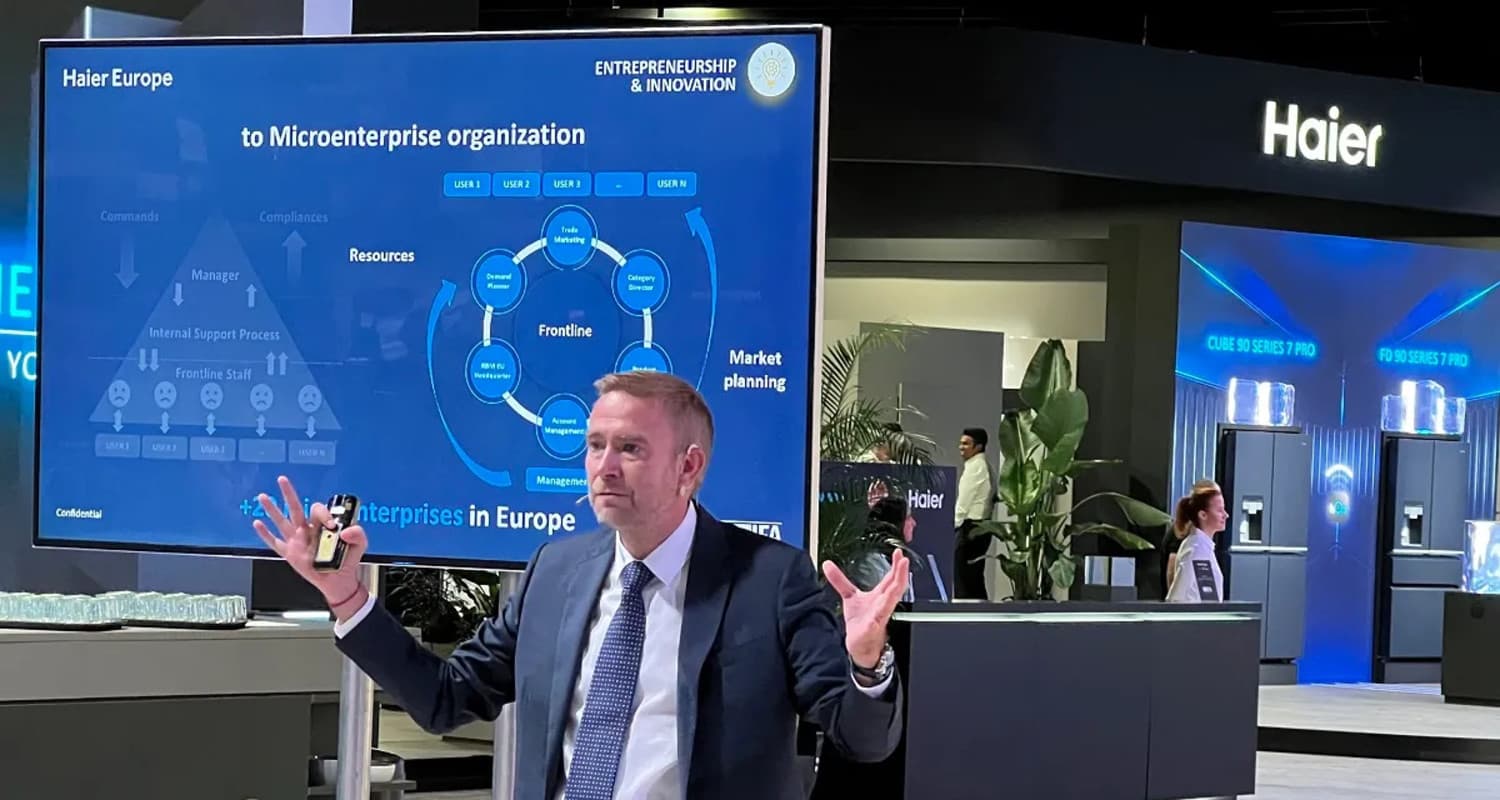Case StudyEcosystem Team: Scaling With Ecosystem Teams - Scaling with Ecosystem Teams
Haier, originally a struggling refrigerator manufacturer in the 1980s, faced significant challenges including poor product quality, ineffective management, and intense competition. Under Zhang Ruimin's leadership, Haier began a transformative journey to improve its product quality and brand reputation. However, as the market dynamics changed with advancements in technology and increasing customer expectations, Haier realized the need for a more agile and innovative organizational model. This led to the development and evolution of the Rendanheyi model, which aimed at decentralizing the organization and fostering an entrepreneurial spirit among employees. The challenge was to navigate through various phases of this model to ultimately establish a customer-centric ecosystem capable of sustaining long-term growth and innovation.

The Solution
Haier emphasizes decentralization, employee autonomy, and a relentless focus on creating value for the customer. As they were experimenting with scaling such teams they went through three distinct phases to gradually transform from a traditional manufacturer into a network of interconnected micro-enterprises.
First Phase (2005-2012): Decentralization and Micro-Enterprises
- Haier initiated the Rendanheyi model by breaking down its hierarchical structure and creating independent micro-enterprises.
- Each micro-enterprise was empowered to operate autonomously, focusing on specific customer needs and market demands.
- Employees were given significant decision-making power, fostering an entrepreneurial mindset and incentivizing them based on their direct contributions to customer satisfaction and business success.
Second Phase (2012-2019): Entrepreneurial Ecosystem and Platformization
- The model evolved to encourage every employee to act as an entrepreneur, fostering innovation and responsiveness.
- Haier established internal market mechanisms where micro-enterprises could compete and collaborate, simulating real market conditions.
- Haier created platforms to facilitate resource sharing, innovation, and collaboration both internally and with external partners, supporting the development and scaling of new business ventures.
Third Phase (2019-Present): Customer-Centric Ecosystem and Digital Transformation
- Haier's focus shifted to achieving "zero distance" between the company and its customers, leveraging IoT and big data to gain insights into customer behaviors and preferences.
- Continuous feedback loops were established to ensure customer needs directly influenced product development and service improvements.
- Haier’s structure now supports a vast ecosystem of internal and external partners, all collaborating to create and deliver value to customers.
Outcomes achieved
The continuous refinement of the Rendanheyi model has not only enhanced operational efficiency but also positioned Haier as a pioneer in modern management practices.
- Increased Innovation and Agility:
- The decentralized structure allowed for faster decision-making and more agile responses to market changes.
- Haier's micro-enterprises launched numerous innovative products tailored to specific customer needs, significantly reducing time-to-market.
- Enhanced Employee Engagement:
- Employee satisfaction and motivation increased as they took on entrepreneurial roles with greater autonomy and responsibility.
- The profit-sharing mechanisms aligned employees' incentives with business success, fostering a culture of ownership and accountability.
- Customer Satisfaction and Market Leadership:
- The customer-centric approach resulted in higher levels of customer satisfaction and loyalty.
- Haier maintained its position as a global leader in the home appliance market, with substantial growth in market share and brand value.
- Global Recognition and Replication:
- The success of the Rendanheyi model at Haier has attracted attention from global business leaders and scholars.
- Other companies across various industries are now looking to replicate Haier's ecosystem model to drive their own transformations.
